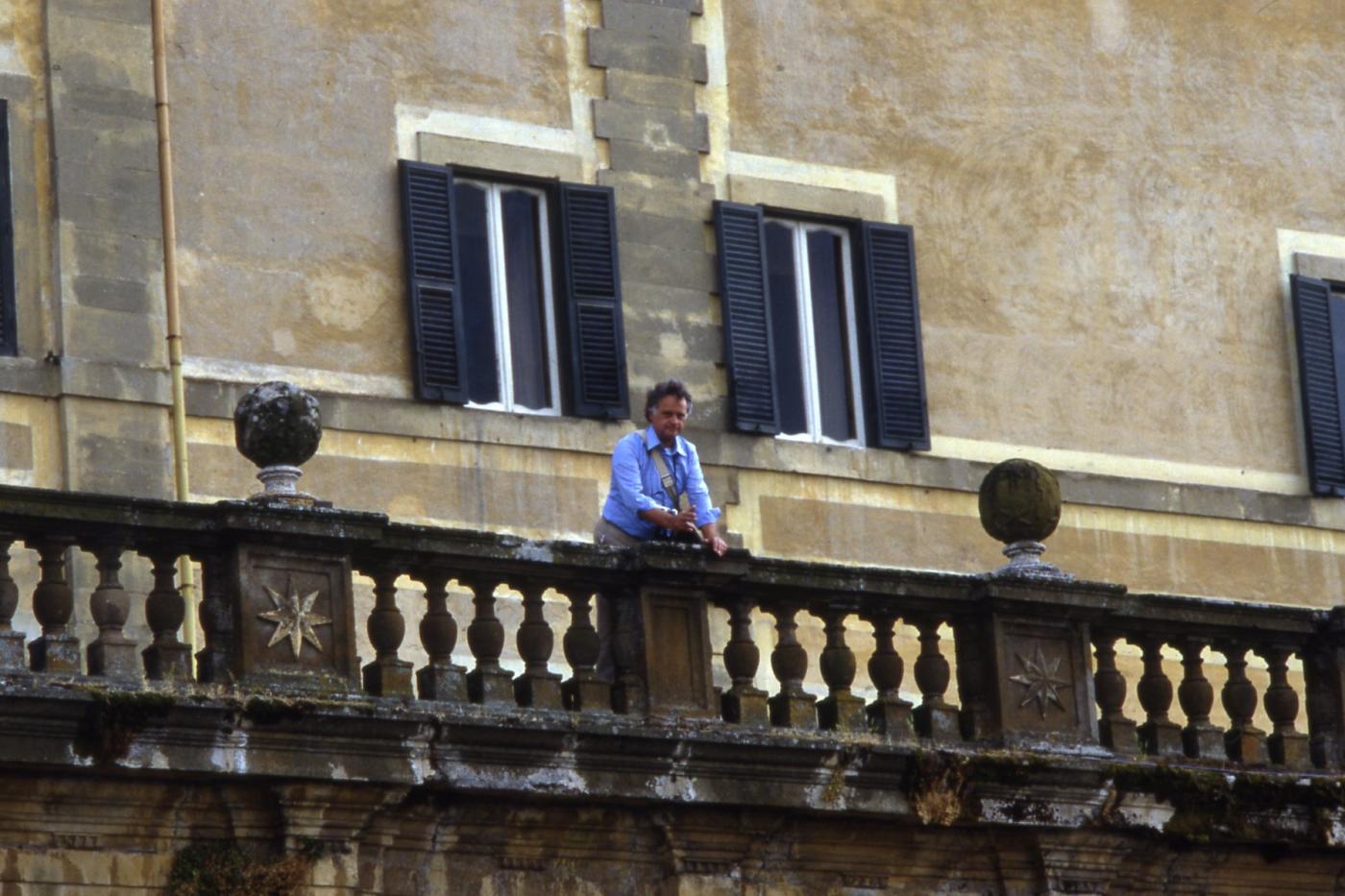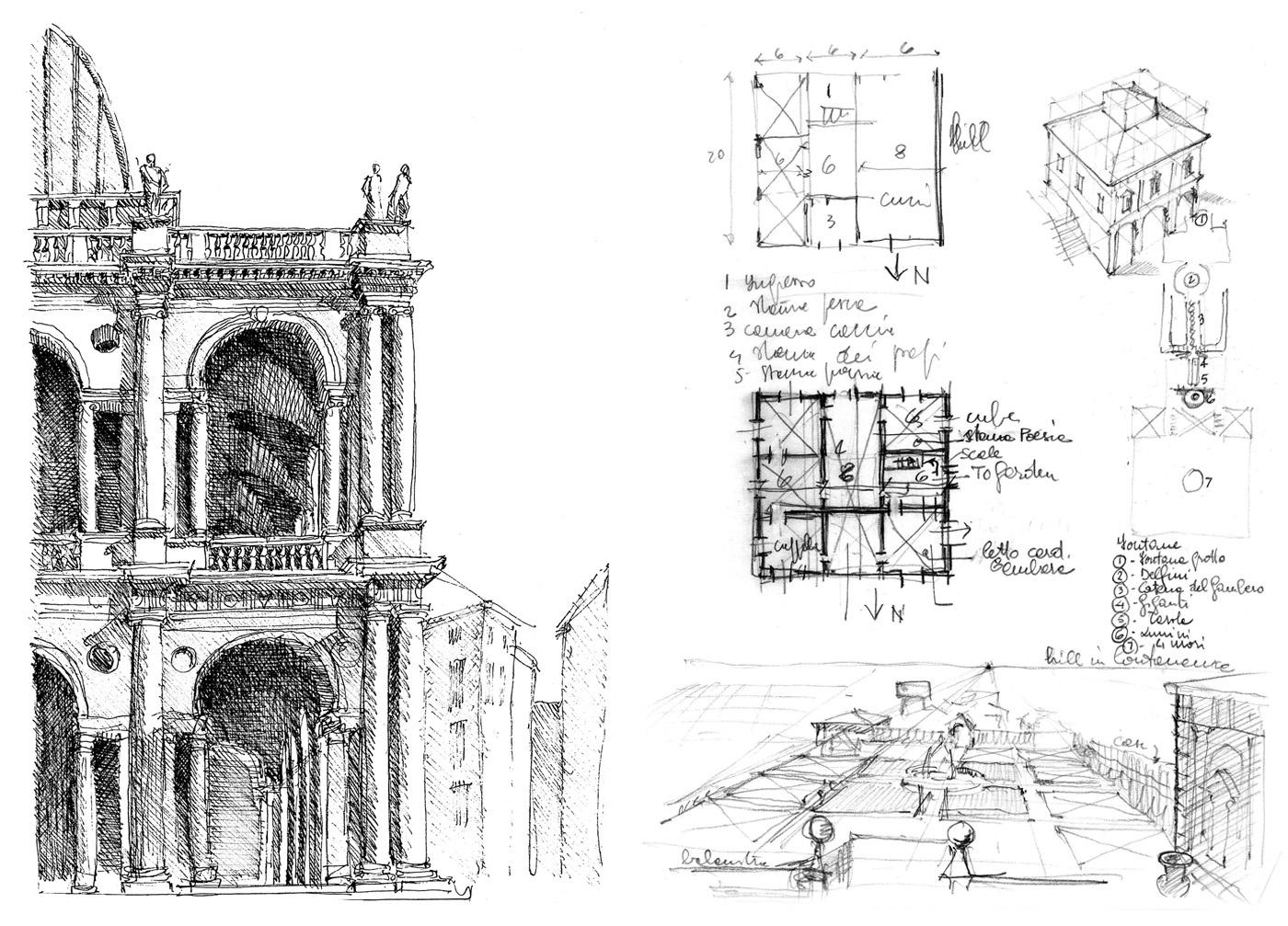SUPPORT OUR VENETO PROGRAMS
ABOUT THE VENETO PROGRAMS
In 1975, Professor Mario di Valmarana (1929-2010) established the University of Virginia’s first official international study abroad program — the Vicenza program at the School of Architecture. Four years later, he founded the Venice program specifically for graduate students. Mario envisioned these study-abroad programs as an “extension of the University in another realm,” in which students could immerse themselves in the culture, art and architecture of his native region of Italy, known as the Veneto.
Today, the Vicenza program is a five-week immersion experience for approximately 20 students, while the Venice program brings approximately 16 students to the region to examine it first-hand through both contemporary and historical lenses. In Mario’s view, the lessons of Venice and Vicenza would be portable, deep reservoirs of cultural expression and invention that offer important insights for students from all the School’s disciplines. Over the years, the Veneto programs have become a cherished, integral part of the School of Architecture and the University of Virginia.
OVERVIEW + PROGRAM GOALS
The School is continuing to build on this 45-year history of study in Venice and Vicenza. As a treasured, yet threatened, city, Venice provides an extraordinary laboratory to learn from the past and understand the present in order to imagine the future. The complex web of relationships, both environmental and cultural, link the city, the lagoon and the mainland to exemplify a millennium of adaptation and resilience.
VENICE IS A CITY SHAPED BY THE CONSTANT NEGOTIATION BETWEEN HUMAN INGENUITY AND FORCES FAR GREATER THAN ITSELF.
— Professor William Sherman
The architecture, landscape architecture, history and urban planning of Venice and Vicenza are deeply intertwined in ways that the UVA School of Architecture is uniquely positioned to explore through its strong and lasting connections in the region. With a dedicated faculty and a rapidly growing research network, the School will advance its position as a leading teaching and research institution in the area through these programs, extending the University’s global reach and identity abroad.
TO MAKE A GIFT TO THE VENETO PROGRAMS
Mario di Valmarana Professor and Director of Programs in Venice and the Veneto
William Sherman is the Mario di Valmarana Professor and will take the lead in developing the curricular and pedagogical framework as Director of Programs in Venice and the Veneto.
Rotating Core Faculty in Venice
Each year, in addition to the Valmarana Professor, a School of Architecture faculty member (from any department) will be based in Venice to co-develop and co-teach the curriculum. Since 2021, Ali Fard, Assistant Professor of Architecture and Urban + Environmental Planning, has been the core faculty cohort alongside Professor Sherman.
Research Topics
The program will reflect the research goals set by the faculty in research areas such as architectural, urban and landscape preservation and conservation; ecological resilience in urban systems; materiality; tectonics; and cultural dynamics.
Veneto / Charlottesville
The semester-long, 15-credit Venice program includes six immersive weeks in Venice and Vicenza with integrated courses, followed by a return to Charlottesville to complete studio or research projects.
Summer Program in Vicenza
The summer program in Vicenza continues to thrive with a cohort of approximately 20 students, working with Professors Luis Pancorbo and Ines Martin-Robles for 5 weeks/35 days of study. The Vicenza Program focuses on drawing the architecture, urban settings and landscape of Vicenza and the Veneto.
THE SCHOOL IS COMMITTED TO OFFERING THE VENETO STUDY ABROAD EXPERIENCE TO ANY STUDENT, REGARDLESS OF THEIR PERSONAL FINANCES.
The School seeks to raise $2 million to expand its current endowments and advance the Veneto programs in a sustainable manner. The following funds are established to support the Veneto programs:
Venetan Fellowships Fund
—— established in 1996
—— covers student costs (above tuition)
—— fundraising goal: $1 million
—— annual distribution goal: $85K
Valmarana Professorship Fund
—— established in 2001
—— covers faculty and teaching costs
—— fundraising goal: $850K
—— annual distribution goal: $75K
Valmarana Memorial Fund
—— established in 2010
—— covers programmatic costs
—— fundraising goal: $150K
—— annual distribution goal: $15K
A SINGLE $100K FELLOWSHIP WILL BE MATCHED 50% BY THE UNIVERSITY.
The Venice Program costs each student an additional $5K in program fees (above normal tuition), which includes airfare, travel, housing, materials and guest lecturers. It requires $100K in endowed funds to cover these program fees for one student and ensure that the cost of the Venice Program is not a burden on any student who wants to attend.
The School seeks partners who are committed to the lessons of the Veneto and to accessible and equitable international study opportunities for all students through a variety of giving levels:
Legacy Level
—— $100,000+ total pledge
—— $20,000 / year for 5 years
—— planned gift / bequest
—— multi-year pledge
—— class gift
Presidential Level
—— $50,000
—— $10,000 / year for 5 years
—— planned gift / bequest
—— multi-year pledge
—— class gift
Executive Level
—— $25,000
—— $5,000 / year for 5 years
—— planned gift / bequest
—— one-time gift
Principal Level
—— $5,000
—— $1,000 / year for 5 years
—— multi-year pledge
—— one-time gift
Annual Level
—— $1- $10,000
—— annual gift of variable amount
Mario di Valmarana (1929 - 2010) was a talented architect, outstanding educator, leader in historic preservation and a devoted father and husband. He grew up surrounded by the architectural treasures of Venice and the Veneto region, spending his summers at the family home, Andrea Palladio's Villa Capra in Vicenza, known as la Rotonda, which awakened an early interest in architecture. A gifted student of sculpture, music, and drawing, he was drawn to architecture as a synthesis of the arts. After earning his architecture degree from the Istituto Universitario di Architettura in Venice in 1955, he moved the following year to New York City, where he practiced architecture and attended graduate courses in Columbia University's School of Architecture. There he studied with the renowned Palladian scholar Rudolf Wittkower, and developed a firm belief in the relevance of architectural history for the design work of the present which he retained throughout his career.

His distinguished 52-year career was remarkable for its breadth. It encompassed 14 years of professional practice with architectural firms in New York City and Washington D.C. on a wide range of urban projects. For 28 years, he taught at the UVA School of Architecture, where he served as the Director of Historic Preservation and founded the School's first international study program in Vicenza and Venice. These programs have remained an essential part of the curriculum. He was a legendary professor who combined a profound grasp of the history of architecture, studio instruction, and historic preservation with an enthusiasm, eloquence, and sense of humor that were contagious for all who were privileged to work with him. His knowledge of architecture was so vast that to experience buildings and landscapes through his eyes was to enter upon an entirely different level of appreciation and understanding. As a teacher, he was both devoted and demanding. He was a mentor to a generation of students, many of whom he welcomed into his home and family and who remained lifelong friends.

